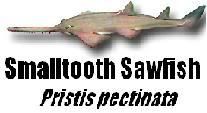Amphibians and Reptiles
-
Flavorflav
- Member

- Posts: 1388
- Joined: February 5th, 2006, 7:06 am
- Division: Grad
- State: NY
- Has thanked: 0
- Been thanked: 3 times
Re: Amphibians and Reptiles
As I said, start with the rattle and general coloration. If you have melanistic specimens, coloration will not be helpful. The most certain method to tell crotalus from sistrurus OR agkistrodon is the scales on the head. Crotalus has small asymmetrical head scales, while agkistrodon has large symmetrical scales. Sistrurus and Agkistrodon have nine large plates on the top of the head, while crotalus has mostly small scales.inuyashakusho wrote:Under the rules, you may not be tested on any taxa more specific than those on the list. This won't stop people from asking though, so being somewhat prepared is not a bad idea. Also the differences on the head scales is crotalus and sistrurus not crotalus and agkistrodon. The same goes for general coloration. To tell the difference between Crotalus+Sistrurus from Agkistrodon, you first look for the rattle, check to see if the head is a copper color (copperhead), and if the mouth is open with white it is a cotton mouth. The cotton mouth also has a golden lure like tail tip. They also have fairly distinguishable nonspecific traits.
- Deeisenberg
- Exalted Member

- Posts: 237
- Joined: April 29th, 2007, 7:23 pm
- Division: Grad
- State: PA
- Has thanked: 0
- Been thanked: 2 times
Re: Amphibians and Reptiles
I wasn't aware of the fact that it was also a difference between agkistrodon and crotalus. Thanks for that information.
Events: Herpetology, Fossils, Entomology, Rocks & Minerals, Ornithology, Ecology
Nationals 2008: 1st in Herpetology
Nationals 2009: 1st in Herpetology, 2nd in Fossils
Harriton Class of 2010
Nationals 2008: 1st in Herpetology
Nationals 2009: 1st in Herpetology, 2nd in Fossils
Harriton Class of 2010
-
Flavorflav
- Member

- Posts: 1388
- Joined: February 5th, 2006, 7:06 am
- Division: Grad
- State: NY
- Has thanked: 0
- Been thanked: 3 times
-
savvyvonmunchausen
- Member

- Posts: 2
- Joined: January 15th, 2009, 7:11 am
- Division: C
- Has thanked: 0
- Been thanked: 0
Re: Amphibians and Reptiles
i haven't done the event yet, but i'm going to at our confernce competition. no one really takes confernce seriously, but i'm still wondering what i should really be looking for along the lines of study materials? because i have no idea what this is gonna be like.
<3Savhannah!
-
Flavorflav
- Member

- Posts: 1388
- Joined: February 5th, 2006, 7:06 am
- Division: Grad
- State: NY
- Has thanked: 0
- Been thanked: 3 times
Re: Amphibians and Reptiles
Where did you get the idea that you aren't supposed to have snakes in division B? You had them last year (which was the first time this event has run since 2001) because you ARE supposed to.EcoFreak wrote:I love this event, but I have a question. Does anyone else have snakes in devision B? We arn't suppost to, but we seem to every year. please respond.
-
paradoxgirl
- Member

- Posts: 67
- Joined: December 20th, 2008, 1:35 pm
- Division: Grad
- State: PA
- Has thanked: 0
- Been thanked: 0
- Deeisenberg
- Exalted Member

- Posts: 237
- Joined: April 29th, 2007, 7:23 pm
- Division: Grad
- State: PA
- Has thanked: 0
- Been thanked: 2 times
Re: Amphibians and Reptiles
Yeah, the lists are identical for both divisions, and you most certainly do have snakes unless your state issues a special list or something. As for what to learn, the best answer I can give is learn id first, and then learn everything major about the species that is stressed in your sources. Then learn absolutely everything you can about all things herpetology.
Events: Herpetology, Fossils, Entomology, Rocks & Minerals, Ornithology, Ecology
Nationals 2008: 1st in Herpetology
Nationals 2009: 1st in Herpetology, 2nd in Fossils
Harriton Class of 2010
Nationals 2008: 1st in Herpetology
Nationals 2009: 1st in Herpetology, 2nd in Fossils
Harriton Class of 2010
- crabnebula143
- Member

- Posts: 293
- Joined: November 26th, 2008, 9:54 am
- Division: Grad
- State: PA
- Has thanked: 0
- Been thanked: 0
Re: Amphibians and Reptiles
Is there a Amphibians+Reps. Wiki???
BC / Harriton High School
'We say we love flowers, yet we pluck them. We say we love trees, yet we cut them down. And people still wonder why some are afraid when told they are loved.'
'Having dined on their companions, they now lie at the center of the cluster, waiting for more food to arrive.'
'We say we love flowers, yet we pluck them. We say we love trees, yet we cut them down. And people still wonder why some are afraid when told they are loved.'
'Having dined on their companions, they now lie at the center of the cluster, waiting for more food to arrive.'
Who is online
Users browsing this forum: No registered users and 0 guests



